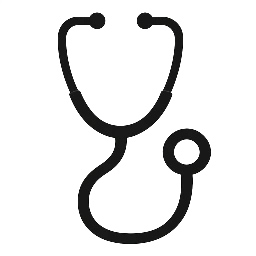DNP 801 Topic 5 Preparing Annotated Bibliographies Assignment
Details:
- Refer to the resource, “Preparing Annotated Bibliographies,” located in the Student Success Center, for additional guidance on completing this assignment in the appropriate style.
- Doctoral learners are required to use Prepare this assignment according to the guidelines found in the APA Style Guide, located in the Student Success Center.
- This assignment uses a rubric. Please review the rubric prior to beginning the assignment to become familiar with the expectations for successful completion.
- You are required to submit this assignment to Turnitin.
Directions:
As you search the library for scholarly research, limit your search to identify empirical articles. You can use the “Empirical Research Checklist” to help with this determination. Upon finding an empirical study, assess the validity of the conclusion by determining if the conclusion answers your proposed research question and if the methodology is appropriate.
Using the “Empirical Research Checklist” and your knowledge of finding empirical research articles, locate six articles directly related to your proposed PICOT question. You may use the three you used for the assignment in Topic 4.
Write an annotation for each of the six articles that includes a concise summary in your own words and the correct APA citation for each article.
Evaluation of Research for PICOT Question Example Approach
The formulation and development of a thoughtful and integrative PICOT question has been insightful on current practice and future recommendations. The literature review gathers necessary information regarding current and future implications for this PICOT question. Literature review is necessary to gather pertinent evidence to support the project and refine the PICOT question. The following PICOT question advises thoughtful consideration through a doctoral project as it is reinforced with considerable research as apparent in the following paper. The chosen PICOT question is: Do oncology patients, who receive massage as an adjunct to pain medications, compared to the standard pain medication therapy, report decreased pain scores, within 4 weeks’ time? This paper will explore evaluating the literature including common and different themes, common works of the authors, data supporting conclusions, and the literary evidence of practical implications to enhance and validate the final PICOT question for the doctoral project.
Evaluation of Literature
Evaluation of the literature for validity and reliability is an important aspect when selecting studies for the doctoral project. Six empirical studies were evaluated and determined reliable that support the PICOT question. The following common and different themes of the literature will be discussed.
Similar Themes
Among the literature review, there were several reoccurring themes. These themes included that massage is a safe adjunct therapy that has no adverse effects, massage is beneficial to immediately reducing pain among oncology patients, massage increases patient satisfaction, and the utilization of light massage is the commonly accepted massage intervention.
The following studies all researched and supported massage among the integrative care for oncology patients and reinforced the support of the PICOT question. Gentile et al. (2018) found that 69% of patients reported a two or more-point decrease in pain level on a pain scale immediately following the massage intervention. The massage intervention utilized gentle Swedish massage that included gliding, light pressure and gentle holds on the patient. The study demonstrated improved quality of life and reduced psychological reactions among the patients. Lopez et al. (2017) showed a significant improvement in pain scores immediately following a light Swedish-style massage. The study revealed improved well-being following the massage. Lee, Kim, Yeo, Kim and Lim (2015) displayed a large reduction in oncology pain among 12 studies in a meta-analysis. Mao et al. (2017) revealed a significant pain level reduction by an average of 1.4 on the pain scale immediately following light or ultra-light massage intervention without any adverse effects. 93% of the participants reported satisfaction …
Cont. …

Leave a Reply